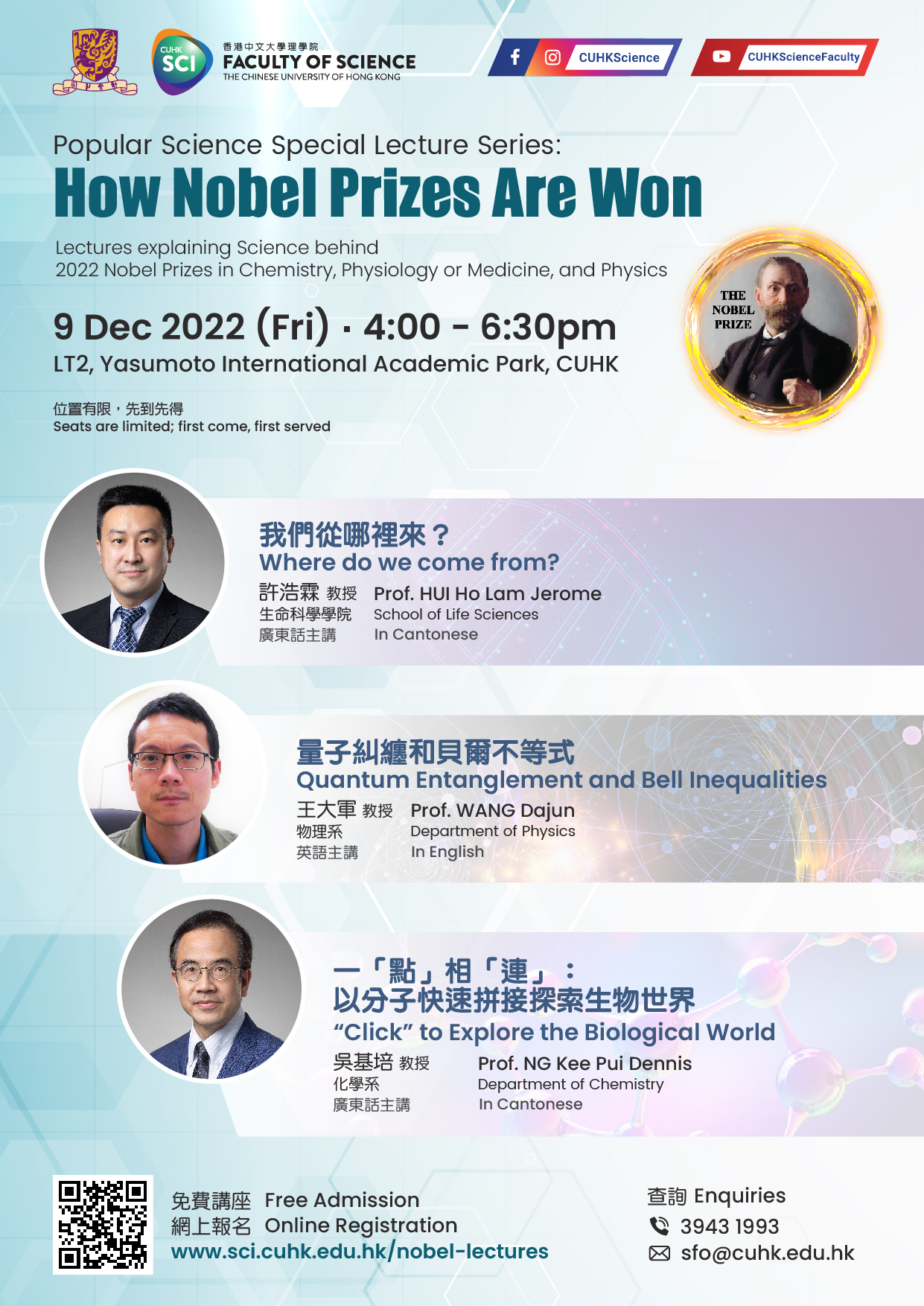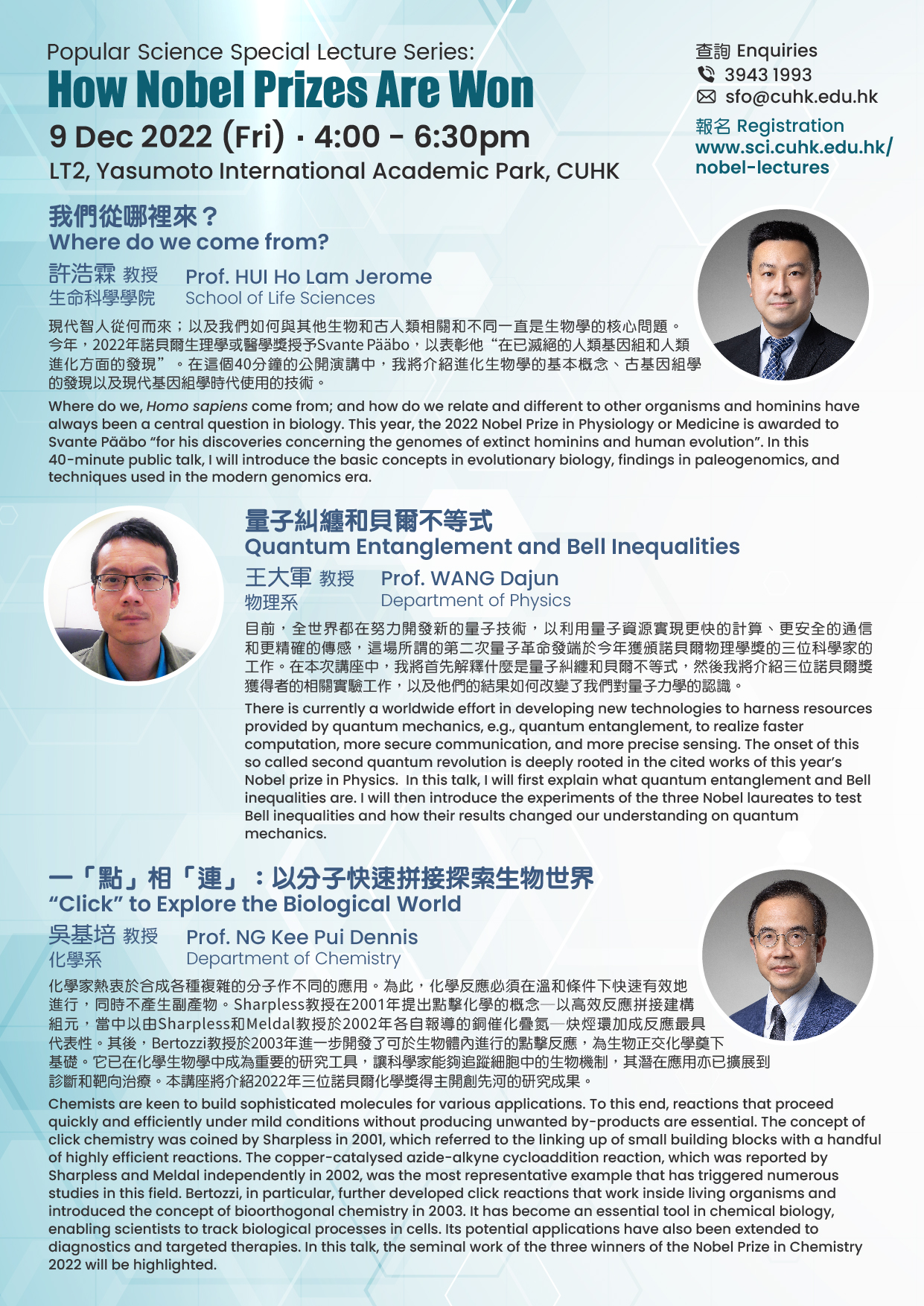The Faculty of Science of The Chinese University of Hong Kong has been dedicated to promoting science to the general public, especially to young people. In addition to our annual Popular Science Talks, where our faculty members give talks on cutting-edge topics of science, we are pleased to hold a special Popular Science Lecture Series on research that covers topics related to each year’s Nobel Prizes in Physics, Chemistry and Physiology or Medicine.
This year, the Popular Science Special Lecture Series: How Nobel Prizes Are Won will be held on 9 December 2022 (Friday).
| Date | 9 December 2022 (Friday) |
| Time | 4:00 p.m. – 6:30 p.m. |
| Venue | LT2, Yasumoto International Academic Park, CUHK (Seats are limited; first come, first served) |
| Registration & Deadline |
6 December 2022 (Tuesday) |
| Enquiries | 3943 1993 / sfo@cuhk.edu.hk |
Lecture Series Topics:
| Talk 1 |
Where do we come from? Prof. HUI Ho Lam Jerome (School of Life Sciences) Where do we, Homo sapiens come from; and how do we relate and different to other organisms and hominins have always been a central question in biology. This year, the 2022 Nobel Prize in Physiology or Medicine is awarded to Svante Pääbo “for his discoveries concerning the genomes of extinct hominins and human evolution”. In this 40-minute public talk, I will introduce the basic concepts in evolutionary biology, findings in paleogenomics, and techniques used in the modern genomics era. |
| Talk 2 |
Quantum Entanglement and Bell Inequalities Prof. WANG Dajun (Department of Physics) There is currently a worldwide effort in developing new technologies to harness resources provided by quantum mechanics, e.g., quantum entanglement, to realize faster computation, more secure communication, and more precise sensing. The onset of this so called second quantum revolution is deeply rooted in the cited works of this year’s Nobel prize in Physics. In this talk, I will first explain what quantum entanglement and Bell inequalities are. I will then introduce the experiments of the three Nobel laureates to test Bell inequalities and how their results changed our understanding on quantum mechanics. |
| Talk 3 |
“Click” to Explore the Biological World Prof. NG Kee Pui Dennis (Department of Chemistry) Chemists are keen to build sophisticated molecules for various applications. To this end, reactions that proceed quickly and efficiently under mild conditions without producing unwanted by-products are essential. The concept of click chemistry was coined by Sharpless in 2001, which referred to the linking up of small building blocks with a handful of highly efficient reactions. The copper-catalysed azide-alkyne cycloaddition reaction, which was reported by Sharpless and Meldal independently in 2002, was the most representative example that has triggered numerous studies in this field. Bertozzi, in particular, further developed click reactions that work inside living organisms and introduced the concept of bioorthogonal chemistry in 2003. It has become an essential tool in chemical biology, enabling scientists to track biological processes in cells. Its potential applications have also been extended to diagnostics and targeted therapies. In this talk, the seminal work of the three winners of the Nobel Prize in Chemistry 2022 will be highlighted. |

















